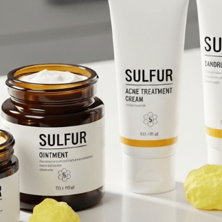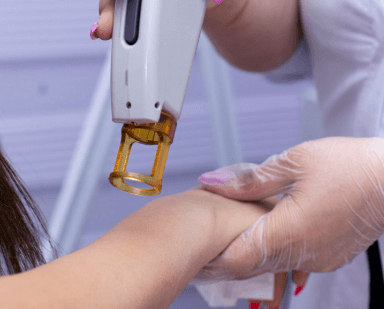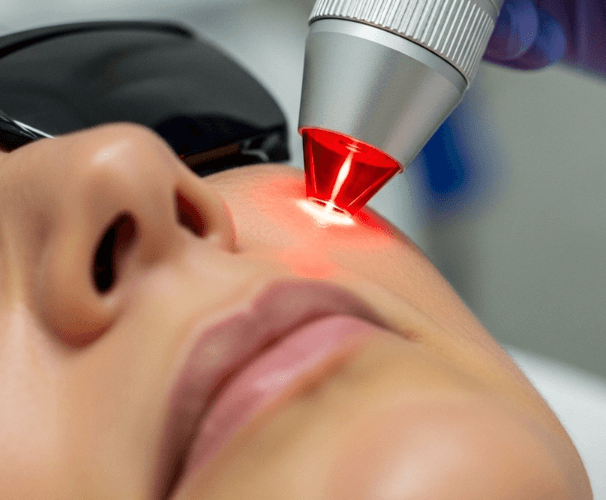Treatment Overview
Sulfur-based topicals are a traditional yet still widely used dermatology treatment in Korea for redness, flushing, and rosacea-related sensitivity. Sulfur has anti-inflammatory, keratolytic, and antimicrobial properties, which make it especially effective for patients with rosacea, seborrheic dermatitis, or acne overlap.
In Korean dermatology, sulfur formulations are offered as lotions, ointments, or combination creams (sometimes with sulfacetamide or low-dose antibiotics). They work by reducing skin inflammation, calming redness, decreasing Demodex mite activity (a trigger for rosacea), and balancing excess oil.
For redness and flushing, Sulfur-Based Topical Therapy:
- Reduces vascular reactivity and surface redness.
- Calms inflammation linked to rosacea and acne overlap.
- Helps regulate oil, preventing heat-triggered flushing.
- Provides antimicrobial action against skin microbes that worsen sensitivity.
Purpose & Benefits
- Redness Reduction: Fades erythema in rosacea and post-acne marks.
- Anti-Inflammatory Effect: Soothes inflamed and flushing-prone skin.
- Antimicrobial Action: Reduces Demodex mites and acne bacteria.
- Sebum Control: Helps patients with oily, redness-prone skin.
- Combination-Friendly: Often paired with metronidazole, ivermectin, or soothing creams.
Ideal Candidates
Sulfur-Based Topical Therapy in Korea is recommended for:
- Patients with rosacea and flushing.
- Individuals with rosacea + acne overlap.
- Adults with seborrheic dermatitis and redness.
- Patients seeking non-steroid, non-antibiotic redness control.
- Those who need a clinic-supervised topical program for long-term care.
Comparison with Other Treatments
- Sulfur-Based Topicals: Gentle, anti-inflammatory + antimicrobial; good for rosacea + acne.
- Steroid Topicals: Rapid flare-up control; unsuitable for long-term use.
- Erythema-Reducing Creams (Brimonidine, Oxymetazoline): Quick vasoconstriction; short-term redness relief.
- Anti-Redness Lasers (PDL, V-Beam, Nd:YAG): Direct vascular targeting; strongest long-term effects.
- Antibiotics (Doxycycline, Minocycline): Internal anti-inflammatory; systemic option.
- Herbal Soothing Therapy: Natural calming, good for sensitive patients.
- Moisture Therapy: Barrier strengthening; supportive, not directly antimicrobial.
Possible Risks & Complications
Sulfur topicals are safe when guided by dermatologists, but may cause:
- Mild dryness or peeling in the first weeks.
- Temporary sulfur odor (common with creams/ointments).
- Irritation if overused, especially on very sensitive skin.
- Rare allergic reaction to sulfa-based combinations.
Treatment Techniques Used
- Sulfur Creams/Lotions: Applied to affected areas once or twice daily.
- Combination Formulas: Sulfur + sulfacetamide, or sulfur + soothing creams.
- Spot vs. Full-Face Application: Adjusted depending on redness severity.
- Clinic Integration: Korean clinics often pair sulfur therapy with laser or cooling treatments for faster redness reduction.
- Frequency: Daily for active flare-ups; tapered to maintenance use.
Recovery & Aftercare
- First Week: Possible mild dryness or peeling.
- 2–4 Weeks: Noticeable reduction in redness and flushing.
- Maintenance: Long-term redness control with regular but moderate use.
Aftercare Tips:
- Always pair with moisturizer to prevent dryness.
- Use SPF 50+ sunscreen daily, as sulfur may increase sensitivity to sunlight.
- Avoid harsh exfoliants or retinoids during treatment unless prescribed.
- If irritation occurs, reduce frequency and combine with calming creams.
Results & Longevity
- Short-Term (2–3 Weeks): Redness and flushing begin to improve.
- Medium-Term (1–2 Months): Clearer, calmer skin tone with fewer flare-ups.
- Long-Term: Stable vascular balance when used consistently with supportive care.
Treatment Process in Korea
- Consultation & Diagnosis – Dermatologist evaluates redness type (rosacea, acne, seborrheic dermatitis).
- Prescription/Recommendation – Sulfur-based cream, lotion, or combination formula provided.
- Usage Instruction – Daily or alternate-day application schedule explained.
- Clinic Add-Ons – Cooling masks, herbal infusions, or vascular lasers added for severe cases.
- Follow-Up – Progress monitored; regimen adjusted to avoid overuse.
Why Korea is a Top Destination
- Widespread availability of medical-grade sulfur creams designed for sensitive skin.
- Dermatologists emphasize low-irritant formulations for rosacea patients.
- Integrated use with lasers, herbal infusions, and cooling therapies.
- Affordable compared to Western prescription products.
- Korea is globally recognized for balancing traditional ingredients (sulfur, mugwort) with modern dermatology.
Cost Range (Detailed Breakdown)
Pricing for Sulfur-Based Topical Therapy in Korea for redness & flushing:
- Consultation Fee: USD 20 – 40.
- Prescription Sulfur Creams (1-Month Supply): USD 15 – 40.
- Medical-Grade Combination Creams (Sulfur + Sulfacetamide/Soothers): USD 30 – 70.
- Clinic Add-Ons (Cooling masks, LED therapy, herbal infusions): USD 50 – 120.
- Premium Redness Program (Sulfur creams + Lasers + Infusions): USD 600 – 1,200 (3–5 sessions).
Additional Costs in Korea:
- Barrier repair moisturizers: USD 30 – 80.
- Sunscreens for redness-prone skin: USD 20 – 50.
💡 Patients often call sulfur creams the “classic calm treatment”, since they have been trusted for decades to reduce redness, control rosacea, and balance sensitive skin.
Popular Clinics in Seoul
- Oracle Dermatology – Sulfur-based prescriptions + laser redness programs.
- Banobagi Dermatology – Sulfur topicals integrated into barrier-strengthening routines.
- Renewme Skin Clinic – Sulfur + herbal calming programs for rosacea patients.
- View Plastic & Dermatology – Redness and acne overlap protocols with sulfur creams.
- Chaum Anti-Aging Center – Premium sulfur-based therapy with regenerative infusions.




